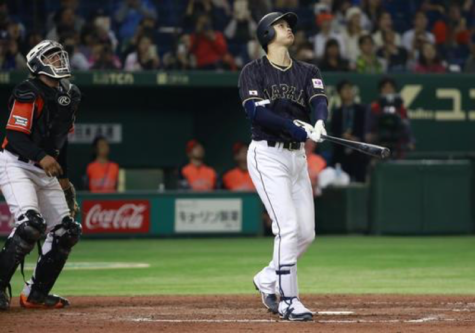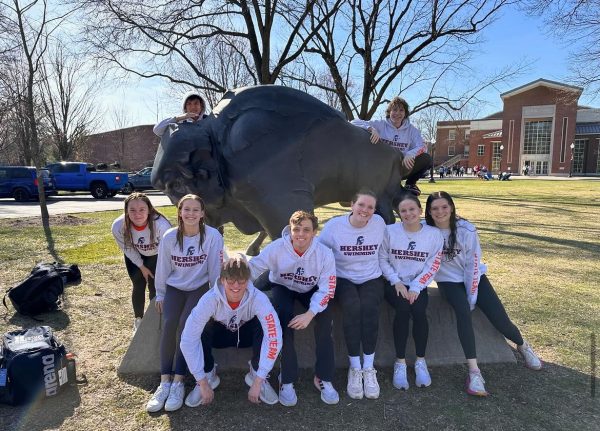Japanese All-star Could Be Next Babe Ruth
April 28, 2017
Better than Ichiro Suzuki?
Extraordinary baseball players from countries outside the United States are given the opportunity to come play in the American baseball league.
In 2016, according to the official website of the Major League Baseball association (MLB), there were 238 athletes born outside the United States featured on opening day rosters. Of those 238 players, eight of them were from Japan. Shohei Otani, better known as Japan’s Babe Ruth, could be making an appearance to the MLB in this years MLB draft on June 12.

Otani, the 6’4” pitcher and power hitter for the Nippon Ham Fighters, started playing in Japan’s Pacific League (JPPL) in 2013 when he was only 18. He was one of the best players in the league with a 10 year age difference. He has played for the Ham Fighters ever since.
In his first year pitching, Otani started 11 games of the 13 total he pitched and had an Earned Run Average (ERA) of 4.23. From his first year to his most recent year, his ERA has decreased to a 1.86 in 2016 – which is more impressive since he was the starting pitcher in 20 of the 21 games he played, almost a 10 game increase from the first year he played in the JPPL.
Not only has he proven that he is consistently improving his pitching, but he is doing well batting, too. In his first season he had 204 plate appearances with 45 hits, giving him a Batting Average (BA) of .238. Otani, in the next season, brought his BA up to a .274, but during the next season, his BA dropped drastically to .202. That was his worst season; however, Otani’s hitting, in the 2016 season, was brought up. He had the most plate appearances, most at bats, most hits, highest batting average, slugging percentage, and on base plus slugging percentage (OPS) of his career.
Compared to other Japanese transferred players in the MLB such as Suzuki, Masahiro Tanaka, and Kei Igawa, Otani looks like he has a good future ahead of him.
Suzuki has been playing in the MLB since 1992, and he played in Japan for the Orix Blue Wave for nine years. Ichiro’s first year in the MLB was spent playing for the Seattle Mariners where he had relatively similar stats to the games he played in the JPPL.
For the veteran right fielder, it appears that the difficulty level from the JPPL to the MLB is relatively similar. The only major difference between the two leagues is that more games are played in America – roughly 141 games are played in the JPPL, and 162 games are played in the MLB.
Suzuki lead the league in at least one statistic from 2001 to 2012 except for one year – 2003. Otani has better stats now than Suzuki did his first few years in the United States, including a batting average above .400 (which Suzuki lead the league in with .350), an on base percentage at almost .470, and a slugging percentage above .800.
Otani should be putting up impressive numbers when it comes to batting.
The game, and his life all together, could get a lot better. Otani’s salary in Japan at the moment is 270 Million Yen. In U.S. dollars, that is equal to roughly $2.5 million, so there is a big difference in value. Kei Igawa, former pitcher for the New York Yankees, had a starting salary of four million dollars when he first played in 2007. He only played for two years, and he did not have a great career as a professional athlete. However, he still made a lot of money from what he did do while he played.
Otani, being able to pitch, play in the field when he’s not pitching, and bat exceptionally well compared to other pitchers who show up to the plate, will make a lot of money in the MLB. He will be around for a while since he is currently 22 years old (the average age that an athlete retires in the MLB is mid to late 30s, early 40s).
Shohei coming to the MLB could become the most exciting rookie season since Ichiro, Mike Trout, or even Albert Pujols.

